I absolutely love fall! The temperatures are much nicer. The fields are a riot of color – lots of bright yellow, of course, but also purples, whites, pinks, oranges, and scattered other colors. Goldfinches are everywhere. And then there are all the butterflies, bees, wasps, and other “bugs” busily going about their business on the flowers.
Everywhere you look there is something new to discover, observe, and become completely fascinated by. I share a few of the nature-related discoveries and observations we’ve made over the last couple of months in this article.
Our cup plants (Silphium perfoliatum) are pollinator magnets in August and even into part of September. Then as they go to seed, the goldfinches move in and completely devour the seeds. I absolutely love ours, but they are not a good choice for tiny spaces. One of these days I need to take a picture of what has happened in the garden bed where I planted 5 cup plants approximately 5 years ago.
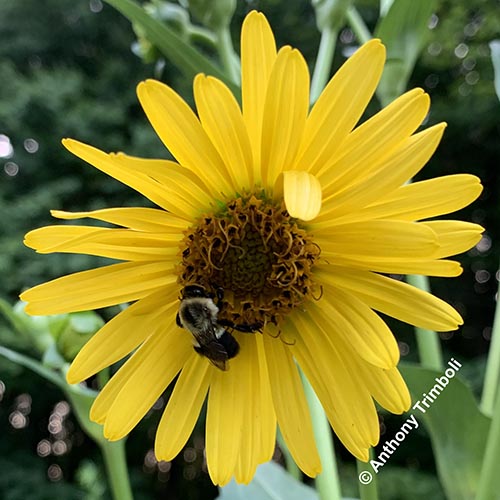
In early August, the snowberry clearwing moths (aka hummingbird moths or bumble bee moths, Hemaris diffinis) were loving my cup plant flowers. It always amazes me how small the snowberry clearwing moths are at that time of year. The ones I see in August are significantly smaller than the ones I see in the late spring / early summer. I’m not real sure why.
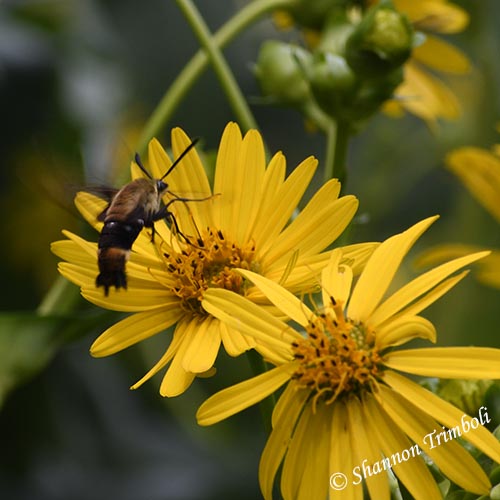
Mom and I went hiking in mid-August and found these beautiful spider lilies (Hymenocallis occidentalis) in full bloom. Spider lilies are native to much of the south and can be found in moist woods or semi-shady areas. They have also become popular native additions to rain gardens or other moist to wet areas.
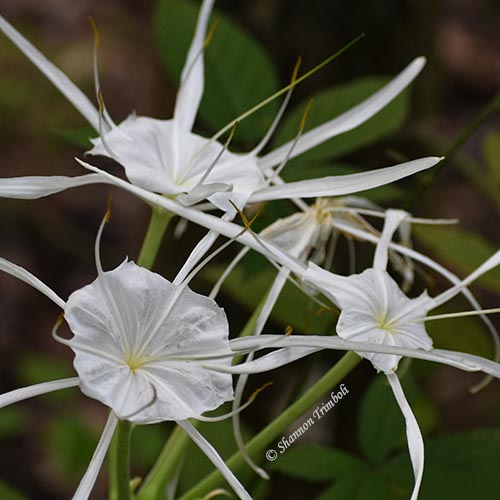
I also found quite a few katydid wasps (Sphex nudus) on our goldenrods. Katydid wasps are one of our common, solitary, ground-nesting wasps that are often found on goldenrods and several other types of flowers in the late summer and early fall. It is dark black, with orange legs, and rich blue wings. The females hunt katydids and Carolina leaf rollers which they paralyze and take back to their nest as food for their young. Adults of both sexes visit flowers for nectar. It was really fun to watch them on the flowers.
Fall is also spider season. There was a time when I wasn’t a big fan of spiders, but that time is long past. Now, I’m amazed by the beauty and diversity that they represent. Most of the time, I struggle to capture the colors of many of the web-weaving spiders. But I was quite proud of this picture that I was able to capture of an orchard orbweaver (Leucauge venusta) that I found enjoying a meal of a freshly caught fly. Doesn’t it have some beautiful colors?
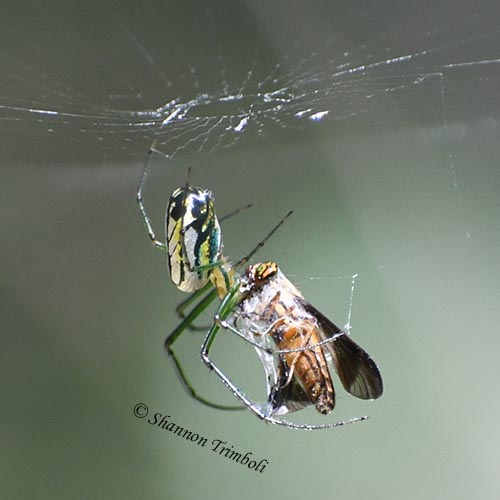
Some of my favorite fall spiders, however, are the crab spiders. Crab spiders can often be found sitting on goldenrods and other flowers waiting for their unsuspecting prey to get too close. The females can even change color from white to yellow in order to better blend in with the flowers they are on. This female white banded crab spider (Misumenoides formosipes) is making a meal of a spotted cucumber beetle (Diabrotica undecimpunctata) that it caught on one of my cup plants.
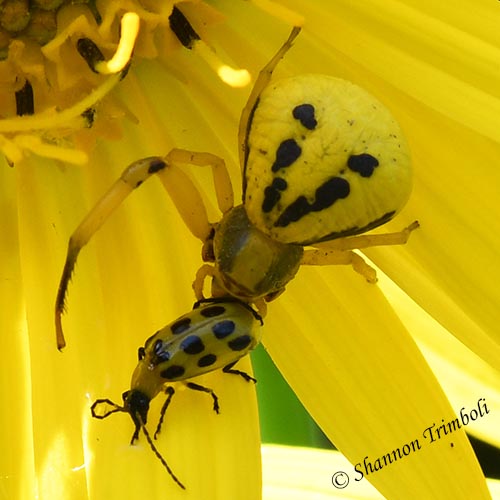
And probably my most exciting find over the last couple of months was a male American bumble bee on our farm!!! The American bumble bee (Bombus pensylvanicus) used to be pretty common, but has undergone severe population declines in recent decades. Last year it was petitioned for listing under the U.S. Endangered Species Act. That’s the first official step for having any species included on the Endangered Species List.
Since I found that first one, I’ve also seen two males feeding on a thistle and possibly a female briefly feeding on an ironweed but she flew off before I got a good look at her. So, it looks like I may have a population of them, not a random stray male, which is even more exciting.
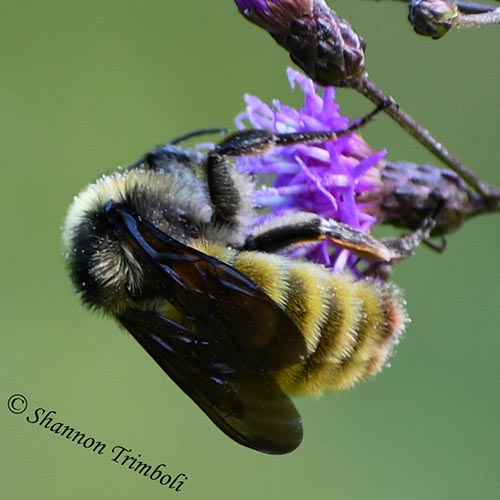
Being able to help rare and declining species like the American bumble bee or the monarch butterfly is one of the reasons why it is so important to plant native plants, reduce pesticide use when possible, and provide year-round habitat in our yards. Just doing those simple things can make a huge difference for many species, including some that are rare or declining.
So, what interesting nature-related discoveries have you made in your yard and community over the last few weeks? I always enjoy hearing what others are finding too.
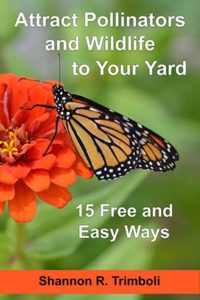
Do you want to make your yard more pollinator and wildlife friendly, but aren’t sure where to start?
Check out my book, Attract Pollinators and Wildlife to Your Yard: 15 Free and Easy Ways, for some easy, quick wins to get you started.

Backyard Ecology: Exploring Nature in Your Backyard
Nature isn’t just “out there.” It’s all around us, including right outside our doors. Hi, my name is Shannon Trimboli, and I am the host of Backyard Ecology. I live in southcentral Kentucky and am a wildlife biologist, educator, author, beekeeper, and owner of a nursery specializing in plants for pollinators and wildlife conservation. I invite you to join me as we ignite our curiosity and natural wonder, explore our yards and communities, and improve our local pollinator and wildlife habitat. Learn more or subscribe to my email list at www.backyardecology.net.

Leave a Reply